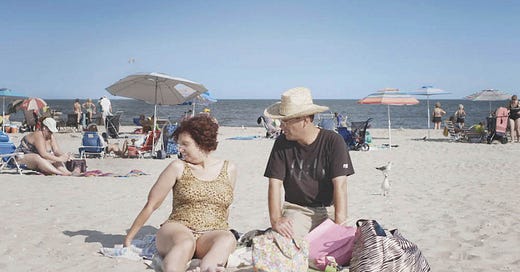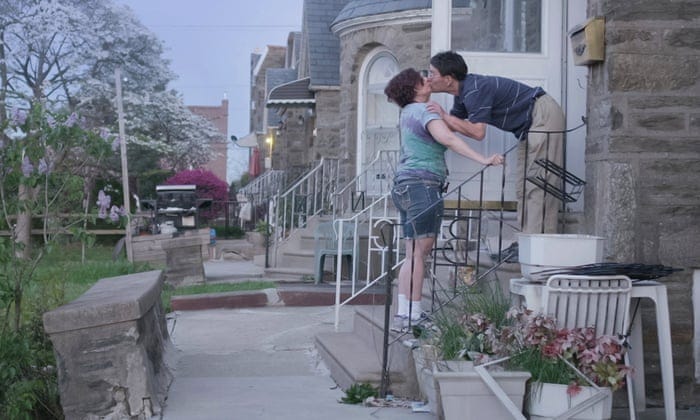Documenting The Ordinary & Exposing The Extraordinary
How documentaries like Dina and Être et Avoir explore the delight in small town stories.
Is True Crime Too Much?
Documentaries within film and television have seen their fair share of genre trends in recent years, from reality television like Educating Essex (2011) to controversial exposé films such as Blackfish (2013).
However, True Crime has become a staple documentary subgenre and has monopolised film, television and streaming services with the likes of Making a Murderer (2015) and Tiger King (2020) becoming social phenomenons that captured the attention of a new and bigger audience, kickstarting a new series of popular and disturbing documentary films that delve into the world of violent and troubling crimes.
While man’s morbid curiosity with murder, death and violence is nothing new, we have seen a substantial increase in the consumption of True Crime media with genre specific podcasts and even TikTok accounts joining the ways in which we consume said materials.
Despite my own love for a good True Crime documentary series and my undeniable inability to stay away from anything remotely morbid, I can’t help but wonder if audiences bloodlust has replaced genuine curiosity and if we’re no longer able to enjoy documentaries that don’t present us with a fiction like narrative or sense of drama.
While there are various styles of documentary film making and there is a wider argument to have regarding the use of typical codes and conventions of fictional media within documentary film to manipulate an audience, it’s one that simply cannot fit into a cheeky weekly newsletter and so we’re going to park it just for today.
Is that cool? Ok, good.
The Joys of Drama Free Documentaries
If there is any proof that a drama free documentary can be completely charming and entirely satisfying is Nicolas Philibert’s 2002 documentary film Être et Avoir, translated as To Be and To Have.
This stunning little film gives audiences a brief insight into a one-room school in rural France with its twelve students and only, dedicated teacher Mr. Lopez.
With just a running time of 105 minutes, Être et Avoir shows the school’s everyday running across just one academic year as Mr. Lopez prepares for retirement and uses traditonal French teaching methods to prepare the older children for their end of year exams.
The film is an incredibly intimate and tender look at a unique educational experience and provides a very rare insight into the personal relationships between teacher and student.
With an observational style of film-making and steady sense of pace through editing, the film is particularly special due to its gentle look at such wonderful and sweet interactions between small children and their male teacher, as the ratio of men to women in this age of education often feel entirely disproportionate.
While we do bear witness to the trials and tribulations of education in such a unique setting, the film really is a sleepy little story of human connection and dedication to what we believe to be most important.
This small little spot in rural France is such a special place to be able to experience through Philibert’s film. It’s a window into a different, quiet world and it’s easy to become emotionally invested with the subject’s wellbeing despite there being no real threat.
Dina & Scott - America’s Sweethearts
Directed by Antonio Santini and Dan Sickles, Dina completely stole my heart a few years ago and immediately became a favourite and very special documentary to me.
Made in 2017, Dina tells the story of the eccentric Dina Buno and her relationship with Walmart door greeter Scott Levin, the ever-patient man in her life.
Living in suburban Philadelphia, Dina and Scott navigate the months leading up to their wedding and in turn deliver my favourite love story ever told.
Dina has a cognitive disability and Scott has Aspergers, and their experience is a unique one as they learn to understand and adapt to eachother’s varying needs.
Dina is an outstanding example of how reality can be so much more entertaining than any amount of fiction. Not only is Dina, both the film as a whole and the individual, very funny but it’s wonderfully sentimental without feeling emotionally exploitative.
Dina’s individual story is incredible on its own. Having survived a violent knife attack from her ex-partner, Dina never imagined she would get married again but would instead enjoy the odd crush.
Then in walks Scott, a delightful gentleman who simply adores his new fiance with a level of openness that a girl can only dream of. The two of them navigate the merging of their lives with wit, gentleness and patience.
The film is not a story about an “autistic relationship”, it’s about the importance of communication, respecting boundaries and Dina’s will to survive and thrive in life after her attack.
It’s so easy to relate to the couple as their communicative styles clash, their anxieties bubble and they prepare for a future together but their bond and their story is something to aspire to.
I think about Dina and Scott all the time. I check their Instagram’s and worry that Scott’s seemed to have been hacked. I wonder what they’re doing and if Scott ever read his copy of The Joys of Sex. I cannot help but to think of them as long-distance friends. That’s the power of the documentary. That’s the power of them.
Small Town Stories
These documentaries are just two examples of how documentary films don’t have to be riddled with gory True Crime influences to be entertaining, stimulating and emotionally satisfying.
There is something so enlightening and entirely unique about these small town stories presented on film. They’re able to transport us to a different world without having to be confronted with a level of discomfort or trauma to reaffirm how different all our lives are.
They’re special and showcase how beautifully complex we are as humans and how similarities in our experiences can be found without feeling as if we’ve been lead down a twee path of emotional manipulation.
I wont be giving up True Crime any time soon but I will always jump at the chance to enjoy these smaller, stunning films. I need to re-watch both and attempt to do so without crying. Which feels entirely unlikely.






